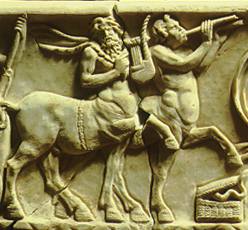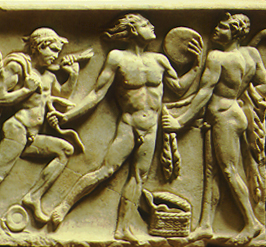
From before the time of Homer, music was an integral part of Greek culture. Festivals, rituals, parties, work, games, theater, and war were all accompanied by music. Greek literature extolled music and was linked with it: much of the Greek poetry and drama known today was originally sung or musically accompanied. Professional musicians were valued members of society whose merits were judged in public competitions. In addition, musical education was an important part of the training of elites, and amateur accomplishments in music were regarded as a sign of culture and taste. Greek music was known throughout the Mediterranean world, influencing and being influenced by the other musical traditions it encountered.

By contrast, in the Roman Republic music was not so highly esteemed. Music was not considered part of the essential education of the elites and amateur performance of music was not encouraged; professional musicians were held in low regard. This situation gradually changed, due in large part to the influences of Greek music: in the imperial period, music became more respectable both in professional and amateur contexts. Although still often decried by some Roman authors as signs of decadence, musical performances were common and skilled musicians highly valued. Music held great importance in certain religious contexts throughout the Roman world.

Theoretical treatises on music in Greek preserve much of the complex system of modes and scales then in use while also addressing such issues as the moral and ethical impact of music on society. Moreover, Greek systems of musical notation permitted the recording of ancient music--some fifty or so compositions are known from such sources (most very fragmentary).

The instruments available to Greek and Roman musicians covered a broad range. Stringed instruments included harps, lyres, kithara, and barbitoi; the lute came later on (perhaps from Egypt or the Near East). Of the wind instruments, the aulos--a reed flute often played in pairs--was the most common, while various other reeded and nonreeded flutes and whistles were known. The panpipe was a collection of pipes of descending length bound together, very common in certain contexts. Horns and trumpets of various kinds are known, often used for hunting and in military contexts. Percussion instruments included drums, tambourines, cymbals, and castanets. The majority of music for which we have surviving notation was vocal, and singing was probably the most common form of musical activity.
